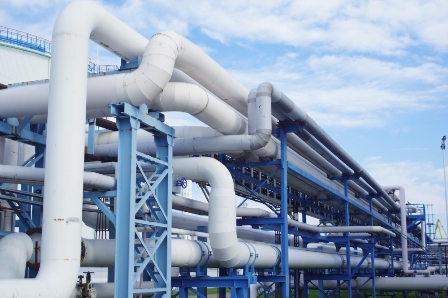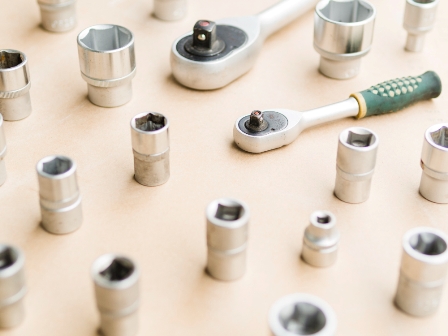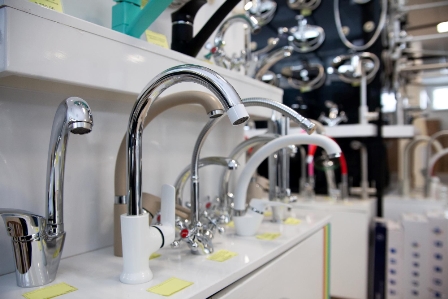When it comes to maintaining and repairing your home’s plumbing system, having a solid understanding of plumbing materials is essential. Whether you’re tackling a DIY project or seeking professional help, knowing the right materials and their applications can save you time, money, and headaches. In this comprehensive guide, we will explore the wide range of plumbing materials available, and their uses, and provide insights into LSI related to plumbing materials.
Pipes and Tubing:

Copper Pipes:
Copper pipes have long been a popular choice for plumbing systems due to their durability, corrosion resistance, and ability to withstand high temperatures. LSI keywords: copper plumbing pipes, copper tubing, copper plumbing fittings. Advantages of copper pipes, copper vs. PVC pipes, how to solder copper pipes.
PEX Pipes:
PEX (cross-linked polyethylene) pipes offer flexibility, ease of installation, and resistance to freezing. They are an excellent choice for both hot and cold water supply lines. LSI keywords: PEX plumbing pipes, PEX tubing, PEX plumbing fittings. Benefits of PEX pipes, PEX vs. copper pipes, PEX pipe installation guide.
PVC Pipes:
PVC (polyvinyl chloride) pipes are commonly used for drain, waste, and vent (DWV) systems. They are lightweight, affordable, and resistant to chemicals. LSI keywords: PVC plumbing pipes, PVC tubing, PVC plumbing fittings. PVC pipe dimensions, PVC vs. ABS pipes, how to glue PVC pipes.
Galvanized Steel Pipes:
Galvanized steel pipes were widely used in the past but have been largely replaced by other materials. However, they can still be found in older homes. LSI keywords: galvanized pipes, galvanized steel plumbing pipes, galvanized pipe fittings. Galvanized pipe corrosion, replacing galvanized pipes, pros and cons of galvanized plumbing.
Fittings and Connectors:

Couplings:
Couplings are used to join pipes together. They come in various materials such as copper, PVC, and stainless steel. LSI keywords: pipe couplings, plumbing couplings, pipe connectors. Types of pipe couplings, how to connect PVC pipes, and choosing the right pipe connectors.
Elbows:
Elbows are fittings used to change the direction of a pipe. They are available in different angles, such as 90 degrees and 45 degrees. LSI keywords: pipe elbows, plumbing elbows, pipe bend fittings. Types of pipe elbows, how to install plumbing elbows, and choosing the right pipe bend fittings.
Tees:
Tees are fittings that allow for a branch connection in a plumbing system. They have three openings, with one inlet and two outlets. LSI keywords: pipe tees, plumbing tees, pipe branch fittings. Types of pipe tees, how to install plumbing tees, and choosing the right pipe branch fittings.
Valves:
Valves control the flow of water or gas in a plumbing system. They can be ball valves, gate valves, or check valves. LSI keywords: plumbing valves, water valves, gas valves. Types of plumbing valves, how to replace a water valve, and choosing the right gas valves.
Fixtures and Faucets:

Sinks:
Sinks come in various materials such as stainless steel, porcelain, and composite. They are available in different styles and sizes to suit your kitchen or bathroom needs. LSI keywords: kitchen sinks, bathroom sinks, sink fixtures. Choosing the right kitchen sink, how to install a bathroom sink, and the advantages of composite sinks.
Toilets:
Toilets are a crucial fixture in any home. They come in different designs, including one-piece and two-piece toilets, and with various flushing mechanisms. LSI keywords: toilet fixtures, bathroom toilets, toilet seats. How to choose a toilet, install a new toilet, and troubleshoot toilet flushing issues.
Showers and Bathtubs:
Showers and bathtubs provide a relaxing bathing experience. They are available in different styles, such as walk-in showers, freestanding tubs, and whirlpool tubs. LSI keywords: shower fixtures, bathtub fixtures, bathroom showers. Choosing the right shower system, installing a bathtub, and the benefits of whirlpool tubs.
Faucets:
Faucets are available in a wide range of styles and finishes, including single-handle, double-handle, and touchless faucets. LSI keywords: kitchen faucets, bathroom faucets, sink faucets. Choosing the right kitchen faucet, installing a bathroom faucet, and troubleshooting faucet leaks.
Sealing and Insulation:
Thread Seal Tape:
Thread seal tape, also known as plumber’s tape, is used to create a watertight seal on threaded pipe connections. It helps prevent leaks and is easy to apply. LSI keywords: thread seal tape, plumber’s tape, pipe sealing tape. How to use thread seal tape, benefits of plumber’s tape, alternatives to thread sealing tape.
Pipe Insulation:
Pipe insulation is essential for preventing heat loss and protecting pipes from freezing in cold climates. It comes in different materials, such as foam and fiberglass. LSI keywords: pipe insulation, plumbing insulation, pipe wrap. How to insulate pipes, the benefits of pipe insulation, and choosing the right pipe wrap.
Plumbing Putty:
Plumbing putty is a pliable sealant used to create a watertight seal around drains, faucets, and other plumbing fixtures. It is commonly used with sinks and tubs. LSI keywords: plumbing putty, sink putty, waterproof putty. How to use plumbing putty, advantages of sink putty, alternatives to waterproof putty.
Caulk:
Caulk is a flexible sealant used for sealing gaps around fixtures, pipes, and joints. It helps prevent water leaks and air drafts. LSI keywords: caulk, plumbing caulk, sealant. How to apply caulk, types of plumbing caulk, benefits of using a sealant.
Tools for Plumbing Projects:
Pipe Wrench:
A pipe wrench is a versatile tool used for gripping and turning pipes. It comes in different sizes to accommodate various pipe diameters. LSI keywords: pipe wrench, plumbing wrench, pipe tool. How to use a pipe wrench, choosing the right plumbing wrench, and alternatives to a pipe tool.
Plunger:
A plunger is a simple but effective tool used for clearing clogged drains and toilets. It creates suction to dislodge blockages. LSI keywords: plunger, drain plunger, toilet plunger. How to use a plunger, types of drain plungers, and unclogging a toilet with a plunger.
Pipe Cutter:
A pipe cutter is a tool used to cut pipes cleanly and accurately. It is commonly used with copper and PEX pipes. LSI keywords: pipe cutter, plumbing cutter, pipe cutting tool. How to use a pipe cutter, types of plumbing cutters, alternatives to a pipe cutting tool.
Auger:
An auger, also known as a plumbing snake, is used for clearing stubborn clogs in drains and pipes. It can be manual or powered. LSI keywords: auger, plumbing snake, drain auger. How to use an auger, types of plumbing snakes, and unclogging drains with an auger.
Maintenance and Safety Tips:
Regular Inspections:
Regularly inspect your plumbing system for leaks, corrosion, and other issues. This helps catch problems early and prevent costly repairs. LSI keywords: plumbing maintenance, plumbing inspections, leak detection. How to inspect plumbing, signs of plumbing problems, scheduling regular leak checks.
Proper Installation:
Ensure proper installation of plumbing materials to prevent leaks and other issues. Follow manufacturer guidelines or consult a professional if needed. LSI keywords: plumbing installation, proper plumbing techniques, installation guidelines. How to install plumbing materials, common installation mistakes, and hiring a professional plumber.
Handling and Disposal:
Handle plumbing materials with care and dispose of them properly. Follow local regulations for the safe disposal of old or damaged materials. LSI keywords: plumbing materials handling, plumbing waste disposal, eco-friendly plumbing. Safe handling of plumbing materials, recycling plumbing fixtures, sustainable plumbing practices.
Safety Precautions:
Take necessary safety precautions when working on plumbing projects, such as wearing protective gear and turning off the water supply. LSI keywords: plumbing safety, safety precautions for plumbing projects, personal protective equipment. Plumbing project safety tips, common plumbing hazards, and the importance of PPE in plumbing work.
FAQs
CPVC (Chlorinated Polyvinyl Chloride) pipe is commonly used for the distribution of hot and cold water in residential and commercial plumbing systems. It is designed to handle higher temperatures and pressures compared to standard PVC (Polyvinyl Chloride) pipes.
The pipe sizes used in plumbing vary depending on the specific application. However, some standard sizes include ½ inch, ¾ inch, 1 inch, 1 ¼ inch, 1 ½ inch, 2 inches, and larger. These sizes refer to the inside diameter of the pipe.
PVC pipe is made from a thermoplastic polymer called polyvinyl chloride (PVC). PVC is a synthetic material that is derived from a combination of natural gas or petroleum and salt. It is a durable and versatile material known for its strength, chemical resistance, and affordability. PVC pipes are commonly used in plumbing systems due to their excellent corrosion resistance, low thermal conductivity, and ease of installation. They are available in various sizes and are widely used for water supply, drainage, irrigation, and other plumbing applications.
Conclusion
Understanding plumbing materials is crucial for maintaining, repairing, or upgrading your home’s plumbing system. By familiarizing yourself with the different types of pipes, fittings, fixtures, and tools, you can make informed decisions and tackle plumbing projects with confidence. Remember to prioritize safety, follow installation guidelines, and perform regular maintenance to ensure the longevity and efficiency of your plumbing system.

